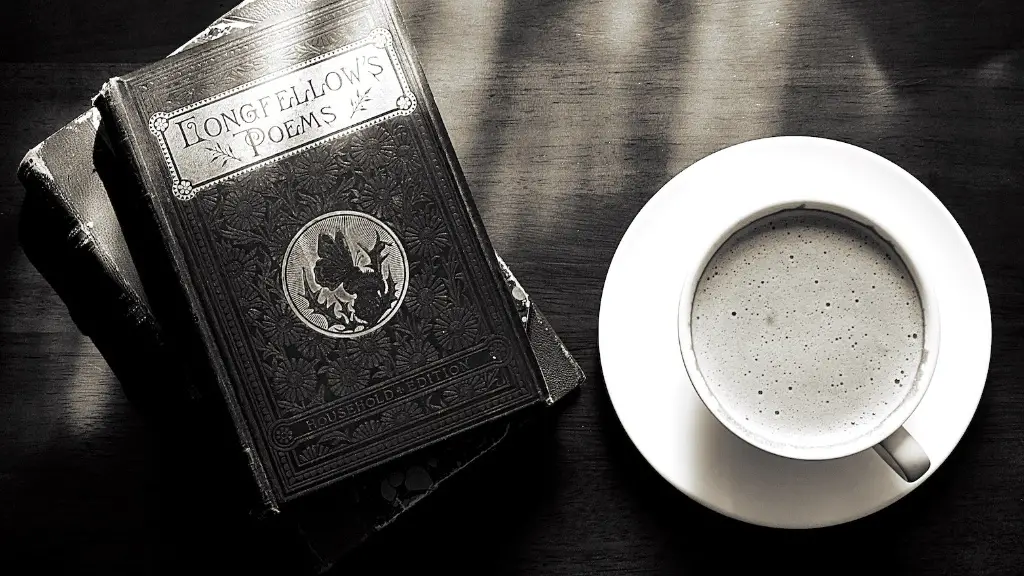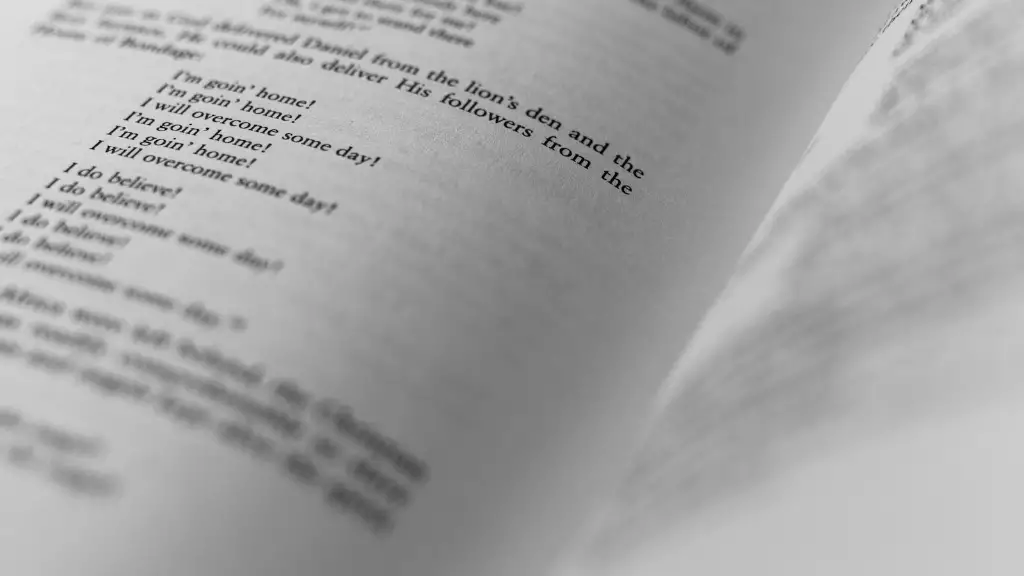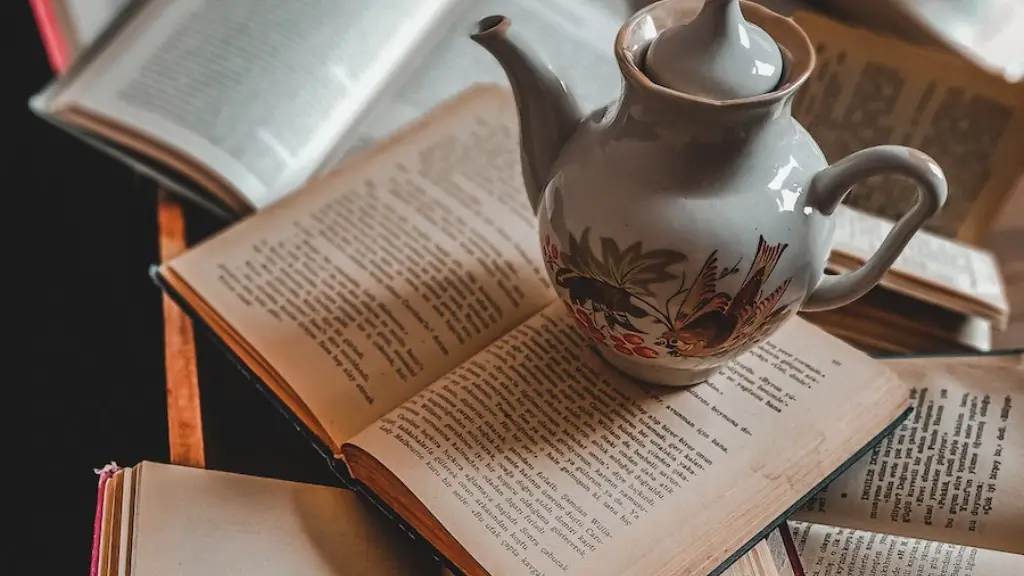Narrative poetry is a form of poetry that tells a story. It is one of the oldest poetic forms and has been used for centuries to express the innermost thoughts and feelings of the poet. Narrative poetry is often used to communicate a message or to create a picture that can evoke emotion in the reader. The narrative can be told from the point of view of the narrator, or from the perspective of the protagonist, or from multiple perspectives. A narrative poem often includes a journey or quest as well as a climax at the end.
Narrative poetry comes in many forms, including ballads, epics, odes and sonnets. A ballad is a narrative poem that usually tells a romantic or tragic story. An epic is a long narrative poem that recounts the exploits of a hero and can span centuries. An ode is a lyrical poem that is often written in response to beauty or another profound experience. A sonnet is a short narrative poem written in fourteen lines.
Most narrative poetry contains elements of characterization, plot, and setting. Characterization is the process of giving characters distinct personalities, traits, and motivations. Plot is the sequence of events and conflicts in a story that leads to a climax. Setting is the time and place in which the story takes place. The use of these elements creates a vivid picture that readers can connect with emotionally.
The use of imagery and figurative language in narrative poetry are essential for conveying emotion. Imagery is the use of sensory descriptions that evoke a mental picture in the reader. Figurative language is language that is not literally true, but instead is used to evoke an emotion or feeling. Examples of figurative language include metaphors, similes, and personification.
In addition to imagery and figurative language, narrative poetry can be enriched by the use of alliteration and repetition. Alliteration is the repetition of consonant sounds at the beginning of words. Repetition is the repetition of phrases or words to emphasize a point or to draw attention to an idea.
Narrative poetry plays an important role in the world of literature. It allows the reader to gain an understanding of the emotions and thoughts that the poet is conveying. By delving into the complexities of human emotions, it creates an emotional connection between the poet and the reader. In addition, narrative poetry can be used to bring a story to life, giving it more depth and meaning.
Importance Of Narrative Poetry
Narrative poetry is an art form that has been used for centuries, and it continues to be one of the most popular forms of poetry today. Narrative poetry is often used to communicate messages, emotions, and stories, and it can be a powerful tool for expressing feelings and experiences. Narrative poetry is also used to educate, inspire, and entertain readers, and it can be a very effective way of conveying a message or telling a story. Narrative poetry can also help to paint a vivid picture of events and experiences, and readers can become emotionally invested in the characters and stories presented.
Narrative poetry is a great way for poets to express their thoughts and feelings about various topics, and it can be an effective way of conveying a message or story. Furthermore, narrative poetry can be used to create vivid images of past and present events, which can help readers to gain a better understanding of the situation. Narrative poetry can also help to create an emotional connection between the poet and the reader, and it can be a great way to communicate difficult or controversial topics.
Narrative poetry is an important part of the literary canon, and it can be used to bring stories to life. Through the use of imagery, figurative language, and other elements, narrative poetry can evoke emotion and create an engaging story. In addition, narrative poetry can be used to convey difficult emotions or topics, and it can be used to share experiences in an impactful way.
Types of Narrative Poetry
There are many different types of narrative poetry, and each type has its own unique characteristics. Ballads, epics, odes, and sonnets are all examples of narrative poetry. Ballads are narrative poems that often tell a romantic or tragic story and can be used to express strong emotions. Epics are long narrative poems that recount the exploits of a hero across many generations. Odes are lyrical poems that are often written about beauty or other profound experiences. Sonnets are short narrative poems that are usually written in fourteen lines and often contain a varying rhyme scheme.
Narrative poetry can also be classified into various sub-genres, such as heroic narrative poems, folk ballads, epics, lyrics, and more. Each sub-genre has its own distinct characteristics, and they can all be used to tell stories in different ways. In addition, some narrative poems may also contain elements of prose, such as dialogue, description, and narration.
How To Write Narrative Poetry
Writing narrative poetry can be a daunting task, but it is something that can be done with practice and dedication. To write narrative poetry, it is important to consider the narrative structure, characters, setting, and other elements that will make up the poem. It is also important to consider the elements of characterization, plot, imagery, and figurative language, as these can all be used to tell a story or to evoke emotion in the reader.
In order to write effective narrative poetry, it is also important to have an understanding of poetic techniques such as imagery, repetition, and alliteration. These techniques can be used to add depth and nuance to a narrative poem, and make it more engaging for the reader. Furthermore, it is important to remember to allow the story to flow naturally, and to have a clear beginning, middle, and end.
Benefits Of Narrative Poetry
Narrative poetry can be an incredibly powerful tool for expressing one’s thoughts and feelings, as it allows the poet to convey emotion and connect with the reader in a meaningful way. Narrative poetry can also help to paint a vivid picture of an experience or event, and readers can become emotionally invested in the characters and stories presented. Furthermore, narrative poetry can be used to bridge gaps between generations and cultures, and can be used to communicate difficult topics or situations.
Narrative poetry can also be used for educational purposes, as it can be used to teach about history, culture, and events. It can also be used to tell stories and teach lessons in a way that is engaging and easy to understand. Additionally, narrative poetry can be used as a form of self-expression, and it can be a great way to explore new ideas or to reflect on past experiences.
Conclusion
Narrative poetry is an art form that has been used for centuries, and it continues to be an important part of the literary canon. Narrative poetry can be used to express emotions, to create vivid images of experiences and events, and to communicate difficult topics or stories. Furthermore, narrative poetry can be used for educational purposes or for self-expression, and it can be a great way to explore new ideas and to reflect on past experiences.




